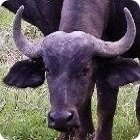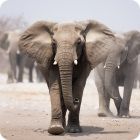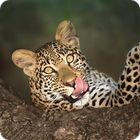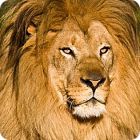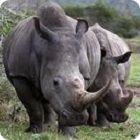africa's big five
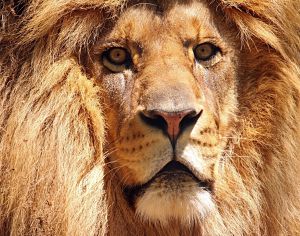
Africa's Big Five does not refer to the five biggest animals in Africa,it is a list of the five most difficult African animals to hunt on foot...
That is not to say that they aren't "big", but giraffes and hippos are clearly larger than leopards.
"Africa's Big Five" is also occasionally misinterpreted to mean the five most dangerous animals in Africa. All the animals in the "Big Five" have killed human beings, but are not statistically the most dangerous animals.
The real test was from a hunting stand point, and big game hunters over the years have declared these five animals to be the most difficult to track down and persue in their native habitats. Danger is a consideration, but hippos actually kill more people than any of the Big Five, yet aren't on the list because they apparently are not as difficult to hunt.
The cape buffalo
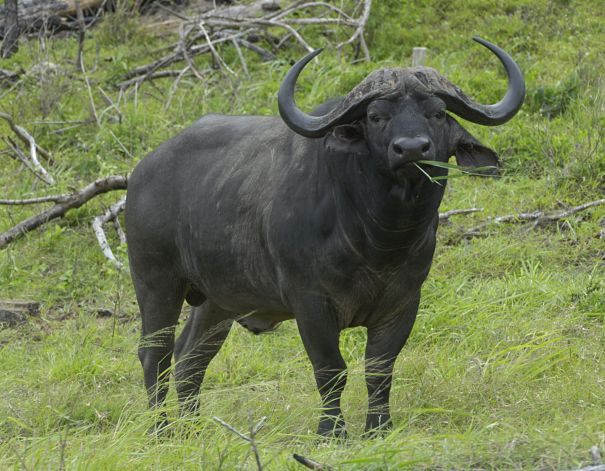
The cape buffalo is perhaps the most dangerous of the "Big Five", particularly if it is injured. They are notorious for seeking revenge on hunters in the bush, turning the tables, tracking down those who shot at or injured them, and sometimes attacking and even killing entire hunting parties.
Known as the "Black Death", the biggest danger in hunting them is that they are so physically dense and muscular that it may take several shots to bring them down. Angered and in pain they may charge and kill the hunter before the bullets have any effect.
the african elephant
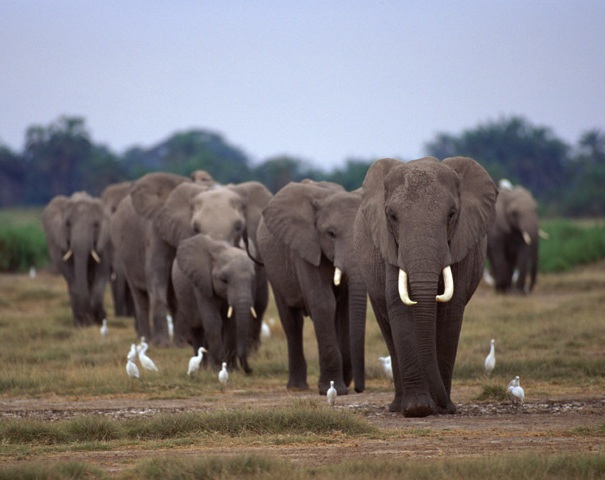
The African elephant is the largest land animal and also one of the most intelligent. They live in family groups made up of females and their youngsters, headed by a wise matriarch. The elephant is extremely social and has shown evidence of compassion and empathy, as well as indications that they mourn dead relatives. Elephants will examine and caress the bones of dead friends and relatives for years after their passing and have been seen to walk deliberately off course to visit a the site of a family members passing.

the leopard
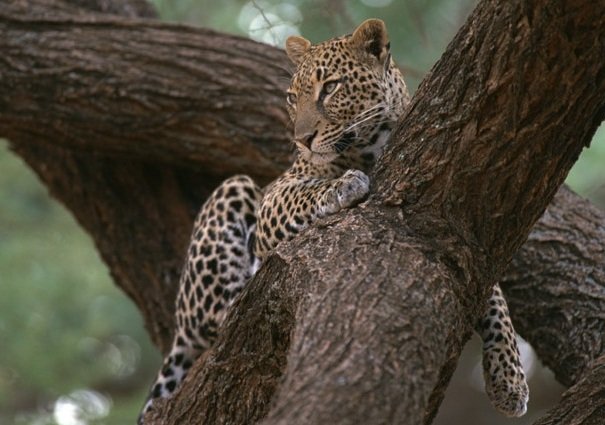
The leopard is the smallest of the "Big Five" but perhaps the most difficult to hunt because they are stealthy and shy. They are significantly smaller than lions and tigers, and occasionally even fall prey to a hungry lion. The jaguar is native to south and central America, and once roamed the southern United States. Both leopards and jaguars are buff to yellow to orange in color with black or dark brown spots in a classic "rosette" pattern. Black individuals occur fairly regularly, the result of a melanism gene. The spots can still be seen on the black fur as subtle shading. Both black leopards and black jaguars are popularly called black panthers, although they are not a separate species and black individuals will occur side by side in the same litter with normally colored cubs. Leopards and jaguars are difficult to tell apart if the location is unknown The jaguar is generally a stouter animal with a proportionately rounder head, fuller cheeks and smaller eyes and ears. It is sometimes stated that the leopard does not have a dot at the center of the circles of dots on its coat known as "rosettes", or that the center of the rosette on the jaguar is darker than the body color, but both jaguars and leopards vary greatly in this regard and coat pattern is not a reliable means of identification.
The african lion
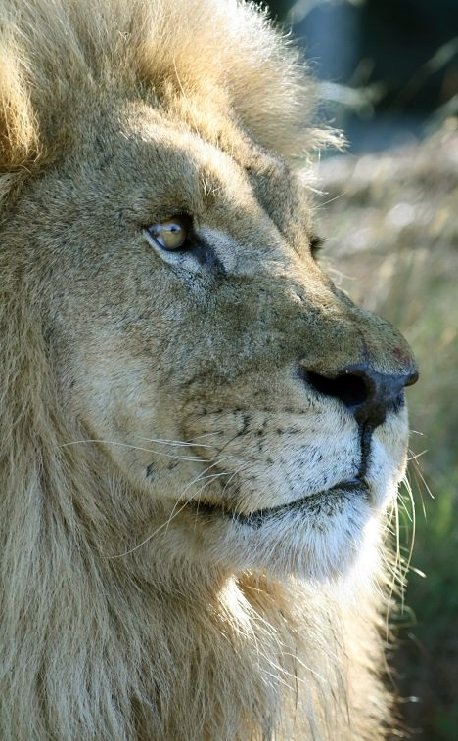
Native to Africa and a tiny portion of India, the lion is the most unique of these cats. Adult male lions display a full ruff of shaggy hair around their heads known as a mane.
This is not just special for a big cat, it is very rare among any mammals to have such obvious physical distinction between the sexes. The lion is also a very social cat with an interesting and complicated pride dynamic.
The king of beasts also has the loudest roar of the four roaring "big cats" - naturally!
the rhinocerus
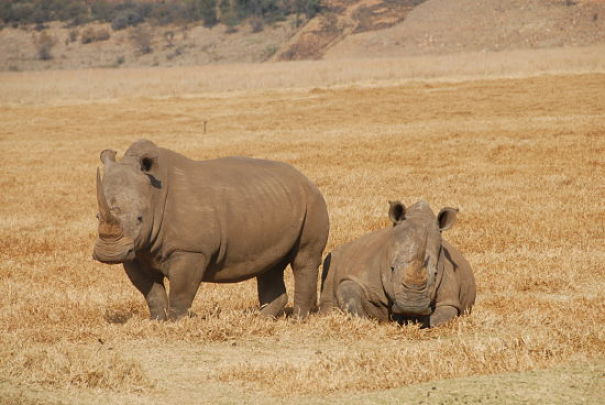
Black rhinos and white rhinos are both native to Africa. They are actually both basically shades of grey in color, and their top lip is a far better way to tell them apart.
The white rhino eats low grasses on the plains and has a wide, straight top lip to shave grass blades close to the ground.
The black rhino dines on different types of vegetation, including buds and shoots in the brush. They have a pointed top lip that is prehensile to wrap around buds and leaves and pull them off branches.
a few more facts about "Africa's Big five"
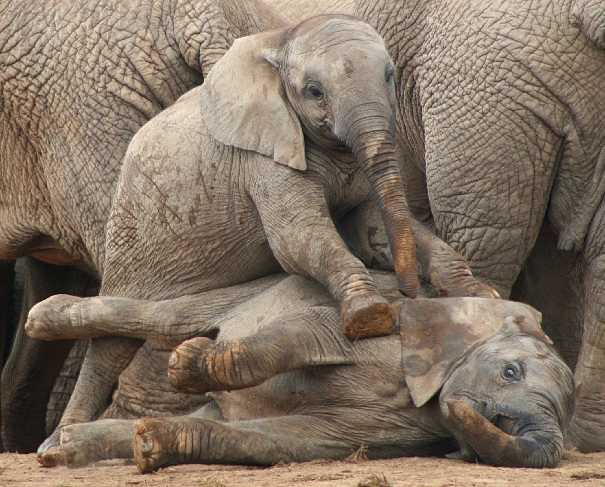
- The cape buffalo is known as the "Black Death"
- The lion has the loudest roar of all the big cats
- Elephants make some noises that are too low for us to hear
- Cape buffalo can weigh as much as 2000 pounds
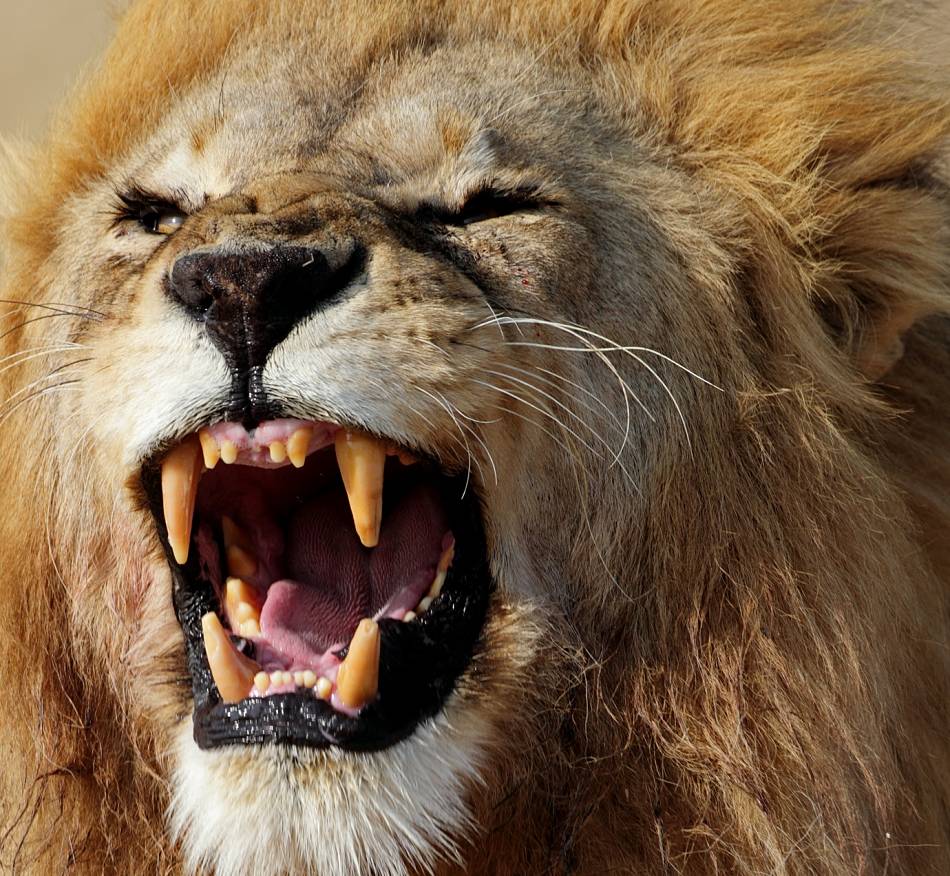
Recent Articles
-
African Animals - Animal Facts Encyclopedia
Oct 11, 16 10:27 PM
African Animals facts photos and videos..Africa is a wonderland for animal lovers, and a schoolroom for anyone who wants to learn about nature, beauty and the rhythm of life -
Baboon Facts - Animal Facts Encyclopedia
Oct 11, 16 10:26 PM
Baboon facts, photos, videos and information - Baboons are very distinctive looking monkeys with long, dog-like snouts and close set eyes. -
Great Apes Facts - Animal Facts Encyclopedia
Oct 11, 16 10:25 PM
Great apes facts, photos and videos..Human beings did not evolve from chimpanzees, modern chimps and gorillas do not appear in the fossil records until much more recently than homo sapiens..
